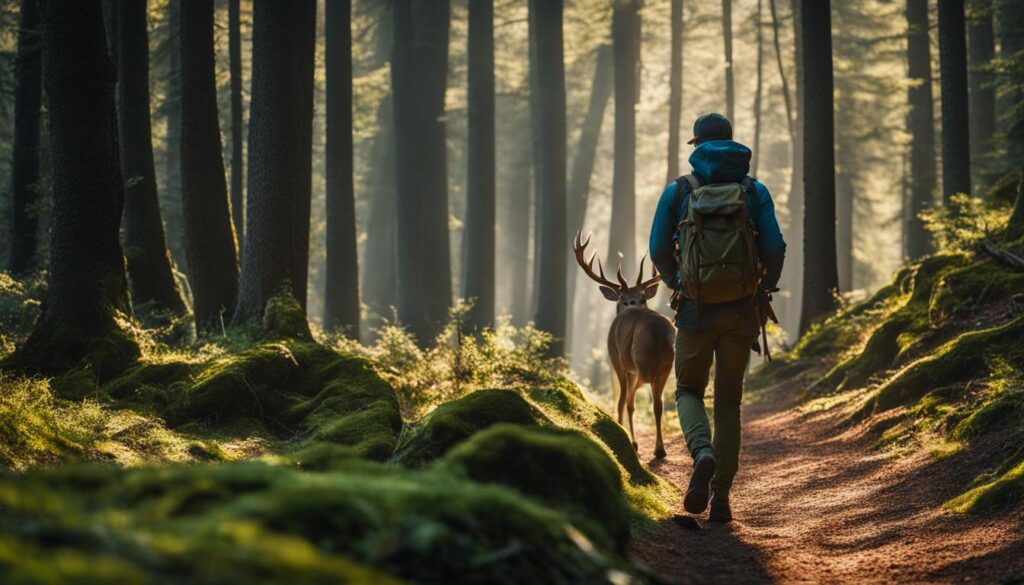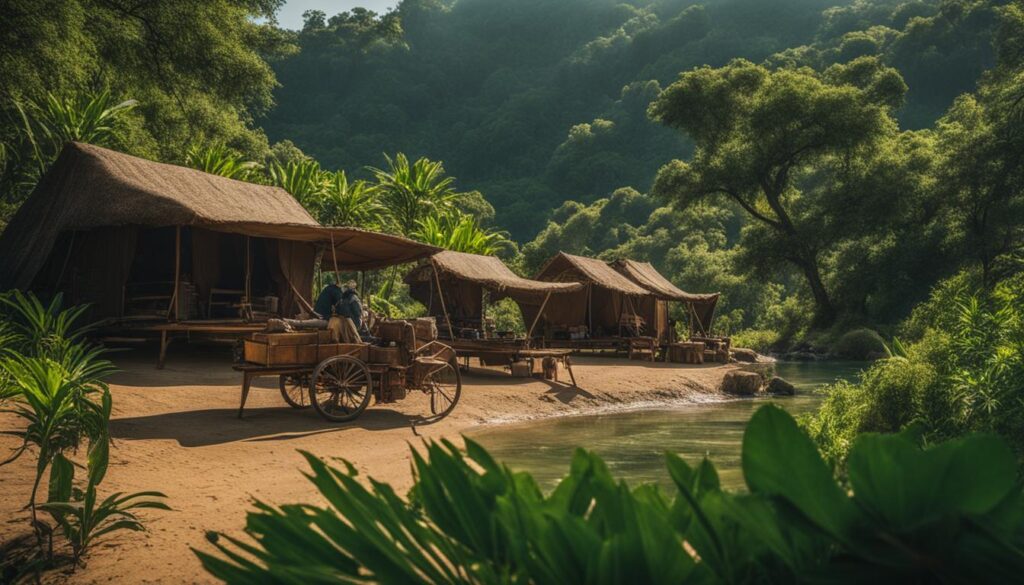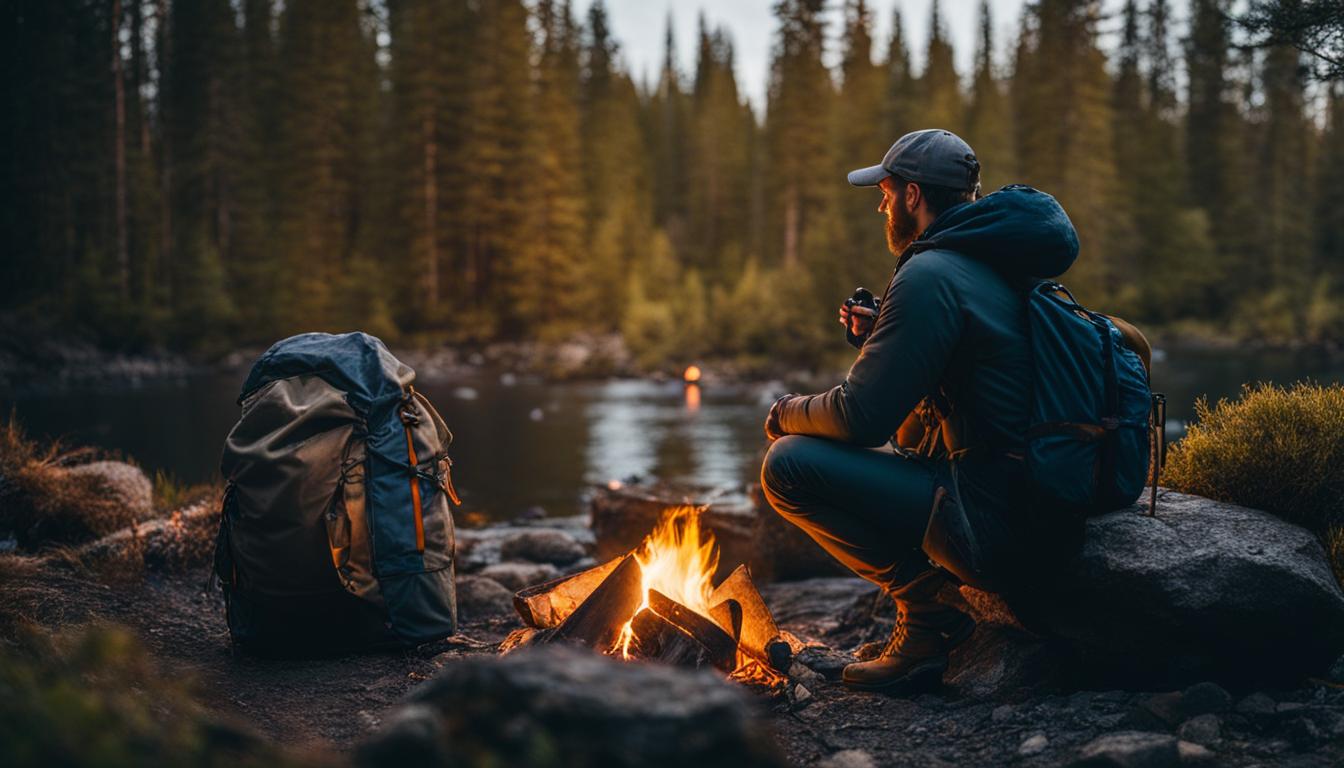Hey there fellow backpackers! Are you ready for some thrilling outdoor adventures? Well, before you embark on your next journey, it’s important to learn how to coexist with wildlife. This backpacker’s guide will provide you with essential tips for safely encountering and respecting the wildlife you may come across during your expeditions.
But hey, let’s not forget to have some fun while learning, right? So, let’s dive in and discover the wild side of the great outdoors!
Key Takeaways:
- Understanding wildlife behavior is crucial for safe interactions during your outdoor adventures.
- Always maintain a safe distance from animals and avoid actions that may provoke them.
- Support wildlife conservation efforts to protect their habitats and ensure future generations can enjoy these incredible creatures.
- Respecting wildlife not only ensures your safety but also contributes to their preservation.
- So get out there, be wild, and show some love for the wildlife that shares our beautiful planet!
Understanding Wildlife Behavior and Safety Precautions

When encountering wildlife while hiking or camping, it is crucial to understand their natural behavior and take appropriate safety precautions. By being aware of wildlife behavior and following safety guidelines, you can reduce the risk of negative encounters and ensure a safer backpacking experience.
One of the common concerns for hikers is encountering snakes. It’s important to remember that most snake bites occur when people provoke or get too close to the snakes. Therefore, it is advisable to maintain a safe distance and avoid any actions that may agitate them. If you see a snake on the trail, calmly step back and give it space to move away.
When it comes to larger wildlife, such as bears or bison, it is crucial to maintain a safe distance and avoid actions that may agitate them. These animals are wild and should not be approached or fed. Always store food securely and dispose of trash properly to prevent wildlife from becoming habituated to human food sources. If you encounter a bear or bison on the trail, give them plenty of space, and if possible, detour around them to avoid any potential conflicts.
Wildlife Safety Tips
Here are some essential wildlife safety tips to keep in mind:
“Maintain a safe distance from wildlife.”
“Stay on designated trails and respect wildlife habitats.”
“Do not feed or approach wildlife.”
“Store food securely and dispose of trash properly.”
“Be alert and make noise to avoid surprising wildlife.”
“Educate yourself on local wildlife and their behavior.”
By following these guidelines and being respectful of wildlife and their habitats, you can coexist safely and enjoy your outdoor adventures to the fullest.
Table: Wildlife Encounters and Safety Precautions
| Wildlife | Behavior | Safety Precautions |
|---|---|---|
| Snakes | May bite if provoked or too close | Maintain a safe distance and allow them to move away |
| Bears | May become aggressive if approached or agitated | Maintain a safe distance, store food securely, and make noise to alert them of your presence |
| Bison | May charge if they feel threatened | Stay at a safe distance, detour if possible, and avoid any action that may agitate them |
The Importance of Wildlife Conservation

As a backpacker, I truly understand and value the significance of wildlife conservation. Preserving the natural habitats of various species is not just a responsibility but a necessity. By safeguarding wildlife and their habitats, we can ensure the survival of diverse ecosystems and protect the delicate balance of our planet.
Wildlife conservation plays a crucial role in maintaining biodiversity. Each species, no matter how small or seemingly insignificant, has a unique role to play in the intricate web of life. When we protect wildlife habitats, we not only ensure the survival of individual species but also contribute to the overall health and resilience of entire ecosystems.
“In the end, we will conserve only what we love, we will love only what we understand, and we will understand only what we are taught.” – Baba Dioum
In addition to its ecological importance, wildlife conservation is also vital for our own well-being. Many species serve as indicators of environmental health, and their decline can be a warning sign of larger issues. By conserving wildlife habitats, we can mitigate the impacts of climate change, preserve natural resources, and create a sustainable future for ourselves and future generations.
| Key Benefits of Wildlife Conservation | |
|---|---|
| Preserves biodiversity | Ensures the survival of diverse species and ecosystems |
| Maintains ecological balance | Helps regulate populations and maintain healthy habitats |
| Indicates environmental health | Species serve as indicators of the overall well-being of our planet |
| Preserves natural resources | Supports clean air, water, and soil for human benefit |
| Contributes to sustainable development | Creates a stable and resilient future for ourselves and future generations |
By recognizing the importance of wildlife conservation and taking active steps to support it, we can ensure that the beauty and wonder of the natural world continue to inspire and enrich our lives. Let’s embrace our role as stewards of the environment and work together to protect and preserve wildlife habitats for the benefit of all.
Conclusion
I’ve learned that coexisting with wildlife is crucial when embarking on backpacking and outdoor adventures. By understanding wildlife behavior and taking appropriate safety precautions, we can ensure a harmonious relationship with the natural world.
Encountering wildlife can be an exhilarating experience, but it’s important to remember that they are wild animals and should be respected. Maintaining a safe distance and avoiding any actions that may agitate them is key to preventing negative encounters.
Furthermore, supporting wildlife conservation efforts is vital in preserving these magnificent creatures and their habitats. By minimizing our impact on wildlife habitats and following guidelines, we can contribute to the protection of diverse ecosystems for future generations to enjoy.
In conclusion, let’s remember to coexist with wildlife responsibly. Respecting their space and habitats not only ensures our own safety but also safeguards the magnificent creatures that share our planet. So, let’s venture out, embrace the wild, and always be mindful of the incredible wildlife we encounter along the way.
What are Some Strategies for Coexisting with Wildlife While Hiking?
When hiking, preventing wildlife encounters tips include making noise while walking to alert animals of your presence, staying on designated trails, and properly storing food to avoid attracting animals. It’s also important to respect their space and not to approach or feed them to maintain a safe coexistence.
FAQ
What precautions should I take when encountering snakes while hiking?
It is important to remember that most snake bites occur when people provoke or get too close to the snakes. To stay safe, maintain a safe distance and avoid any actions that may provoke the snakes.
How should I safely approach bears or bison while camping?
When encountering bears or bison, it is crucial to maintain a safe distance and avoid any actions that may agitate the animals. Keep a respectful distance and observe them from afar.
How can I support wildlife conservation during my outdoor adventures?
You can support wildlife conservation efforts by following guidelines to minimize your impact on wildlife habitats. Be mindful of your actions and ensure you leave no trace, respecting the natural environment of the wildlife.
Why is it important to coexist with wildlife during backpacking trips?
Coexisting with wildlife is vital for a harmonious backpacking experience. By understanding wildlife behavior, taking safety precautions, and supporting conservation efforts, we can ensure a positive relationship between humans and the natural world.

